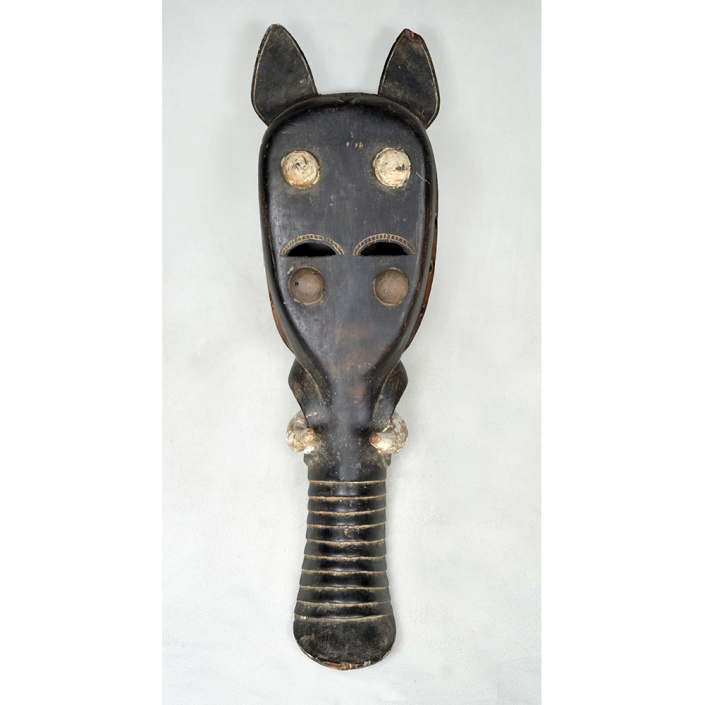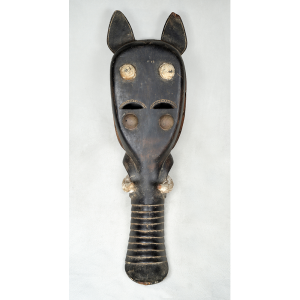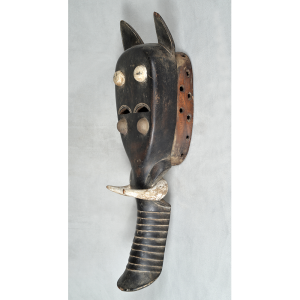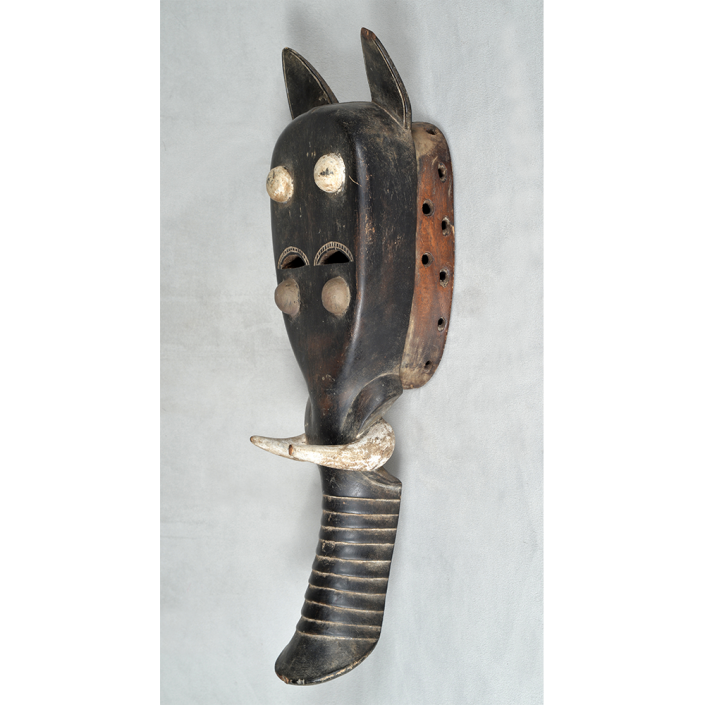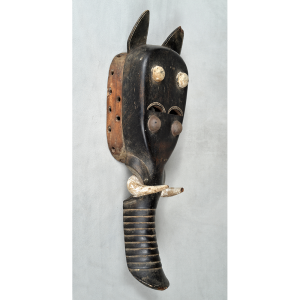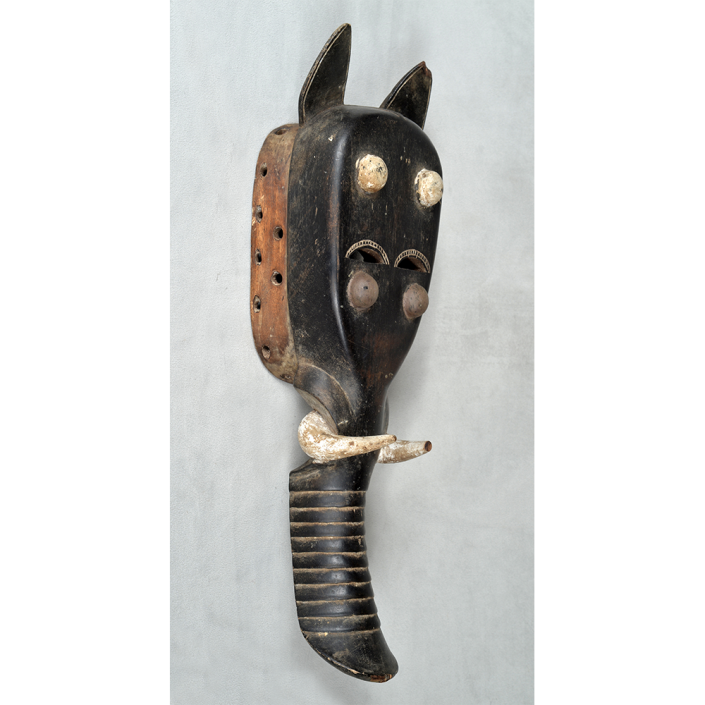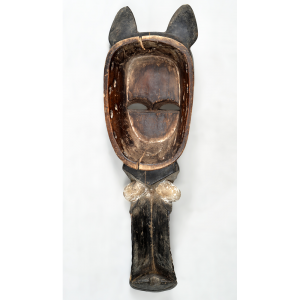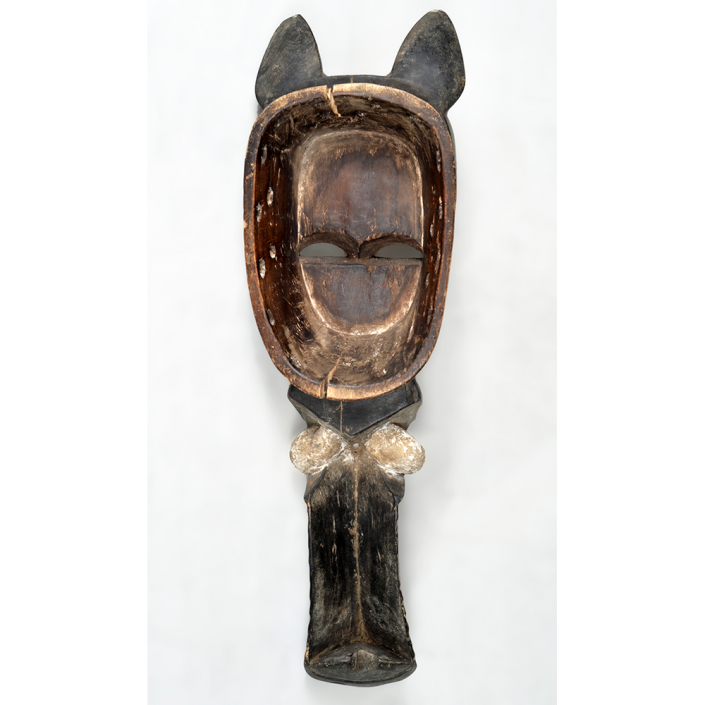TITLE: Baule Bo Nun Amuin
TYPE: face mask
GENERAL REGION: Africa
COUNTRY: Côte d’Ivoire (Ivory Coast)
ETHNICITY: Baule
DESCRIPTION: Bo Nun Amuin Mask
CATALOG ID: AFCI016
MAKER: Unknown
CEREMONY: Funeral; Protection; Social Control; Spirit Invocation
AGE: ca. 1980s
MAIN MATERIAL: wood
OTHER MATERIALS: pigment
The Baule are a relatively large ethnic group inhabiting the eastern Côte d’Ivoire and parts of Ghana. They have a variety of masking traditions, but their most religiously important is the bo nun amuin. Bo nun amuin, translated roughly “god risen from the bush,” are sacred masks worn only by men. They channel powerful bush spirits and as such are used at funerals of village notables, to protect the village from external threats, and to instill discipline and punishment on violators of customs, especially women. They are danced to the sound of a loud bull-roarer, to warn women and children not to watch.
In the past, bo nun amuin were kept in shrines outside of the village, but now are brought to bush shrines on the day before the dance. The men formerly appear naked before the masks to assure the spirit of their masculinity, but today they simply drop their pants when they approach the masks. Before crossing the shrine’s threshold palm wine or gin will be poured over it, and then spat onto the mask as an offering to the mask spirit. Before the 1970’s, war prisoners were sacrificed to the spirit, but today animals such as dogs or chickens are used. The society eats the sacrificial meat, and then the heart and liver of the animal is spat on the mask as an offering. The dancer is bathed and puts on protective amulets, blade shaped bark around his hands and knees, and rattles on his feet. The society next evokes the spirit by singing, and the mask can then leave the shrine for the dance. After the dance, the men shout “k buno,” “go back to the bush,” to usher the potentially dangerous spirit out of the village.
Bo nun amuin masks have varied forms, but they tend to assume the form of a mythological beast combining attributes of an antelope and leopard, sometimes with anthropomorphic features as well. The resemblance to the kponyungo or “fire spitter” funerary mask of their Senufo neighbors is sometimes striking. This specific mask has the relatively unusual shape of an abstract, elongated warthog.
